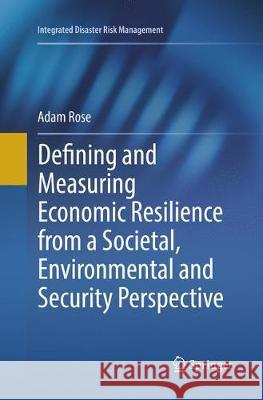Defining and Measuring Economic Resilience from a Societal, Environmental and Security Perspective » książka
topmenu
Defining and Measuring Economic Resilience from a Societal, Environmental and Security Perspective
ISBN-13: 9789811093784 / Angielski / Miękka / 2018 / 91 str.
Kategorie:
Kategorie BISAC:
Wydawca:
Springer
Seria wydawnicza:
Język:
Angielski
ISBN-13:
9789811093784
Rok wydania:
2018
Wydanie:
Softcover Repri
Ilość stron:
91
Waga:
0.28 kg
Wymiary:
23.47 x 15.67 x 0.97
Oprawa:
Miękka
Wolumenów:
01











